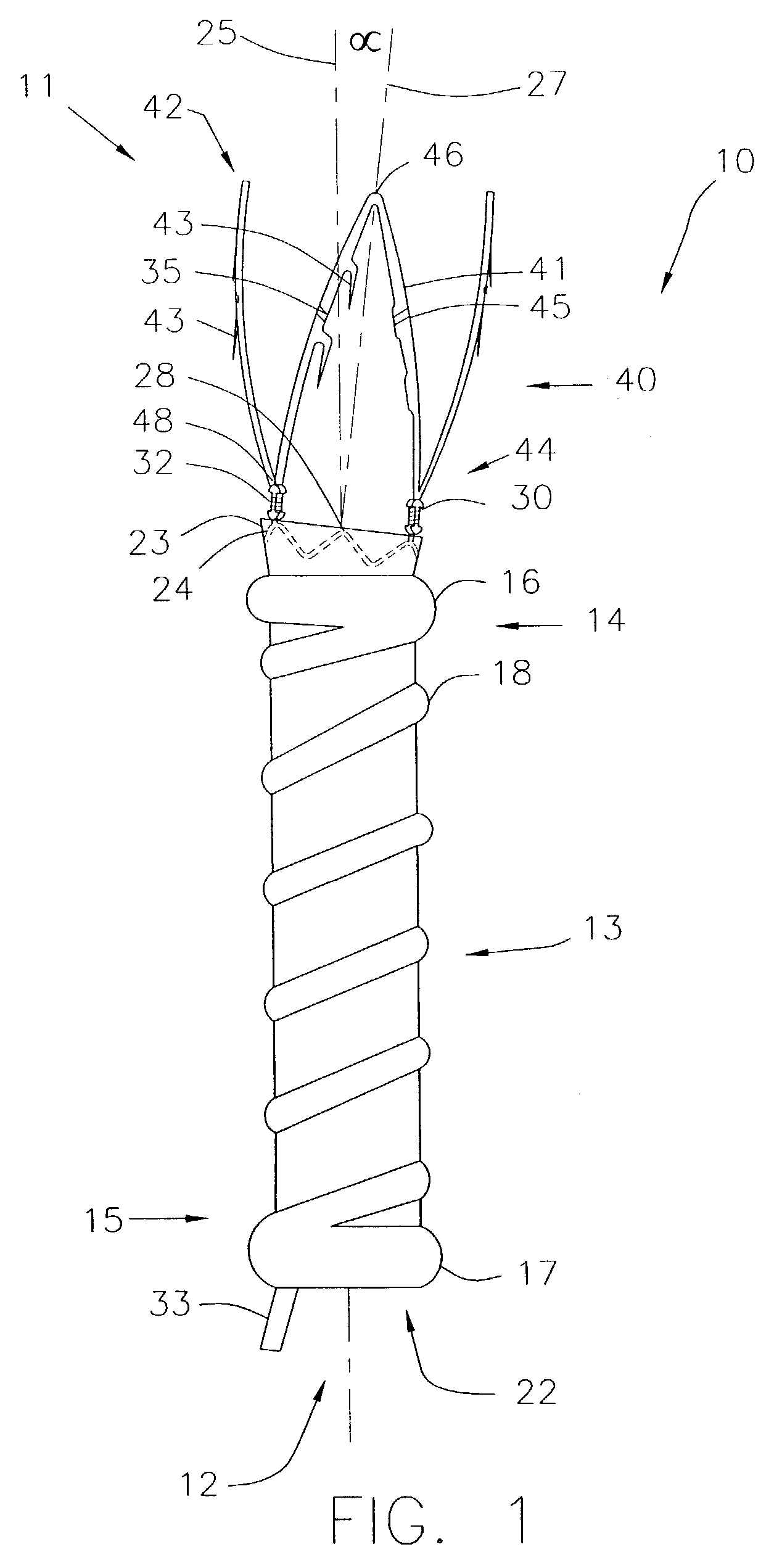Advanced endovascular graft
a technology of endovascular graft and graft body, which is applied in the field of advanced endovascular graft, can solve the problems of significantly increasing the likelihood of complications, high morbidity and mortality rate of open surgery, and significantly reducing recovery time, so as to reduce the potential for undesirable in-folding, enhance the stiffness of the graft body section, and less sensitive to in-folding
- Summary
- Abstract
- Description
- Claims
- Application Information
AI Technical Summary
Benefits of technology
Problems solved by technology
Method used
Image
Examples
Embodiment Construction
[0080]FIG. 1 shows an endovascular graft 10 in its deployed configuration. Unless otherwise stated, the term “graft” or “endovascular graft” is used herein to refer to a prosthesis capable of repairing and / or replacing diseased vessels or portions thereof, including generally tubular and bifurcated devices and any components attached or integral thereto. For. purposes of illustration, the graft embodiments described below are assumed to be most useful in the endovascular treatment of abdominal aortic aneurysms (AAA). For the purposes of this application, with reference to endovascular graft devices, the term “proximal” describes the end of the graft that will be oriented towards the oncoming flow of bodily fluid, typically blood, when the device is deployed within a body passageway. The term “distal” therefore describes the graft end opposite the proximal end. Finally, while the drawings in the various figures are accurate representations of the various embodiments of the present in...
PUM
 Login to View More
Login to View More Abstract
Description
Claims
Application Information
 Login to View More
Login to View More - R&D
- Intellectual Property
- Life Sciences
- Materials
- Tech Scout
- Unparalleled Data Quality
- Higher Quality Content
- 60% Fewer Hallucinations
Browse by: Latest US Patents, China's latest patents, Technical Efficacy Thesaurus, Application Domain, Technology Topic, Popular Technical Reports.
© 2025 PatSnap. All rights reserved.Legal|Privacy policy|Modern Slavery Act Transparency Statement|Sitemap|About US| Contact US: help@patsnap.com



